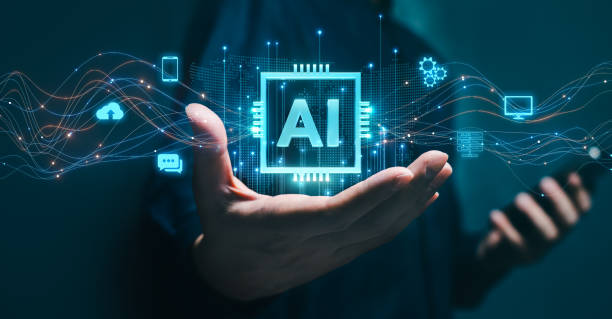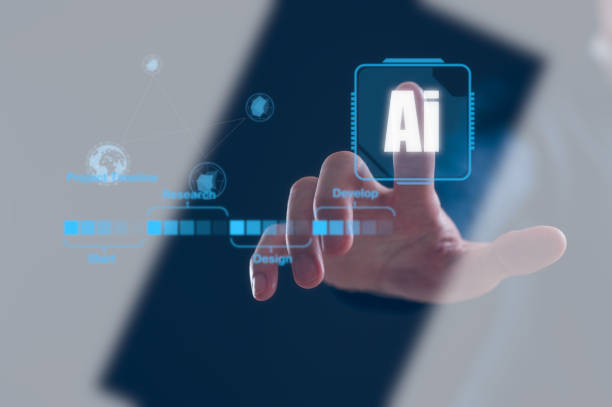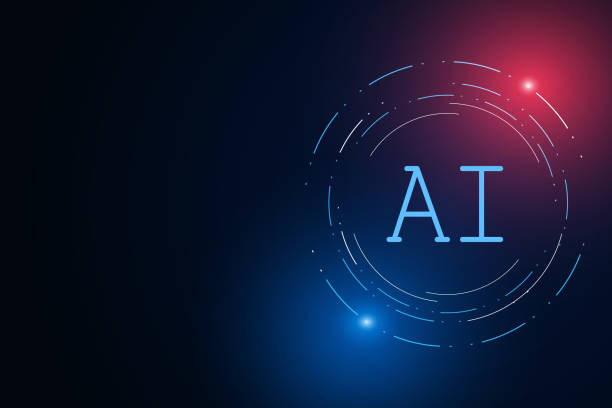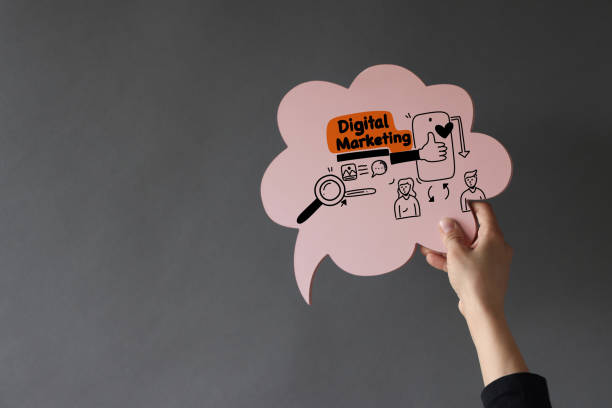### What is an Artificial Intelligence Robot and How Does it Work?
Artificial intelligence robot is a combination of two separate, but related fields: robotics and artificial intelligence.
#Robotics deals with the design, construction, operation, and application of robots.
Robots are usually machines capable of performing a series of complex actions automatically.
On the other hand, #Artificial_Intelligence (AI) is a branch of computer science that aims to create systems that can perform tasks that usually require human intelligence.
These tasks include learning, problem-solving, pattern recognition, natural language understanding, and decision-making.
Robots equipped with artificial intelligence can not only perform pre-programmed movements, but also sense their environment, learn, and make decisions based on it.
An artificial intelligence robot uses complex algorithms, neural networks, and machine learning models to process data and make intelligent decisions.
In other words, an artificial intelligence robot tries to simulate intelligent human behavior.
The function of an artificial intelligence robot usually includes the following steps:
1. Sensing the environment: Robots use various sensors such as cameras, microphones, touch sensors, and proximity sensors to collect information from their surrounding environment.
2. Data processing: The information collected by the sensors is analyzed and interpreted by the robot’s processing systems.
This processing includes the use of artificial intelligence algorithms to recognize patterns, identify objects, and understand natural language.
3. Decision-making: Based on data analysis, the artificial intelligence robot makes decisions that best serve the set goals.
These decisions can include moving, manipulating objects, answering questions, or performing specific tasks.
4. Acting: The artificial intelligence robot uses motors, actuators, and other mechanisms to execute its decisions.
These actions can include moving in an environment, picking up an object, speaking, or performing an industrial task.
Examples of the application of artificial intelligence robots include advanced industrial robots that can perform complex tasks automatically, service robots that can help people with everyday tasks, and explorer robots that can be sent to dangerous or inaccessible places for humans.
Does your company’s website perform as befits your brand? In today’s competitive world, your website is your most important online tool. Rasaweb, a specialist in designing professional corporate websites, helps you to:
✅ Gain the credibility and trust of customers
✅ Convert website visitors into customers
⚡ Get a free consultation!
Amazing Applications of Artificial Intelligence Robots in Various Industries
Artificial intelligence robots are rapidly transforming various industries and offer diverse and extensive applications.
In the manufacturing industry, robots equipped with artificial intelligence can perform repetitive and dangerous tasks with high accuracy and speed, leading to increased productivity and reduced costs.
These robots can automatically manage production lines, check product quality, and even play a role in equipment repair and maintenance.
In the healthcare industry, artificial intelligence robots help doctors perform complex surgeries, discover new drugs, and assist patients in the rehabilitation process.
Nurse robots can also help care for the elderly and disabled at home or in hospitals.
In the field of customer service, artificial intelligence-based chatbots can answer customer questions 24 hours a day, solve their problems, and provide support services.
These chatbots can simulate human conversations using natural language processing and provide a better user experience.
In the logistics and transportation sector, artificial intelligence robots can determine optimal routes for delivering goods, manage warehouses, and even guide self-driving cars.
This leads to reduced transportation time and cost, increased safety, and improved efficiency.
In addition, artificial intelligence robots have many applications in agriculture.
They can automatically plow fields, sow seeds, irrigate, and harvest crops.
These robots can use sensors and artificial intelligence algorithms to identify and optimize the specific needs of each plant.
This leads to increased crop yields, reduced water and fertilizer consumption, and improved product quality.
In general, the applications of artificial intelligence robots are very broad and diverse, and they are expected to play a more important role in various industries in the future.
Challenges and Limitations of Artificial Intelligence Robot Development
Despite the high potential of artificial intelligence robots, the development and implementation of this technology faces challenges and limitations.
One of the most important challenges is the high cost of research and development and the construction of intelligent robots.
Creating robots that are capable of performing complex tasks requires huge investments in hardware, software, and artificial intelligence algorithms.
Another challenge is the complexity of designing and programming artificial intelligence robots.
These robots must be able to understand their environment, make intelligent decisions, and perform various tasks.
For this purpose, experienced specialists in the fields of robotics, artificial intelligence, computer science, and software engineering are needed.
Ethical and legal issues are also among the important challenges in the development of artificial intelligence robots.
The use of robots in some jobs can lead to job losses and increased unemployment.
Also, robot decisions may have ethical and social implications that need to be reviewed and legal frameworks determined.
Technical limitations are also among the obstacles facing the development of artificial intelligence robots.
Robots still have problems in understanding natural language, recognizing emotions, and interacting with humans.
Also, robots need a stable and reliable energy source, which can be challenging, especially in remote and inaccessible environments.
Security and data protection are also among the main concerns in using artificial intelligence robots.
Robots may be exposed to cyber attacks and data theft, which can lead to irreparable damage.
Therefore, it is essential to create strong security systems and comply with data protection standards. Artificial intelligence robot
| Challenge | Description |
|---|---|
| High cost | Research and development, robot construction |
| Design complexity | Need for various specializations |
| Ethical issues | Job loss, ethical decisions |
| Technical limitations | Understanding natural language, security |
Future of Artificial Intelligence Robots: Predictions and Perspectives
The future of artificial intelligence robots is very bright and full of potential.
With continuous advances in the fields of artificial intelligence, robotics, computer science, and software engineering, robots are expected to play a much more important role in our lives in the future.
It is predicted that robots will be able to perform more complex tasks in the future, interact with humans more naturally, and be used in more diverse environments.
One of the most important future trends is the development of autonomous robots that can perform their tasks without the need for human intervention.
These robots can create major transformations in industries such as agriculture, mining, logistics, and transportation.
Also, robots are expected to be widely used in homes and workplaces in the future.
Home robots can help people with everyday tasks, including cleaning, cooking, caring for children and the elderly.
Office robots can also perform repetitive and tedious tasks, process information, and help employees perform their tasks.
Advances in artificial intelligence, especially in the field of machine learning and natural language processing, allow robots to interact with humans more naturally.
Robots can understand questions, answer them, recognize emotions, and even empathize with humans.
This can lead to the creation of companion robots that help people reduce stress, increase happiness, and improve mental health.
However, the development and implementation of artificial intelligence robots requires attention to ethical and social issues.
It must be ensured that robots are used responsibly and in the public interest.
Also, measures should be taken to reduce the negative impact of robots on employment and the economy.
Education also plays an important role in preparing people for life and work in the world of robots.
Are you tired of losing customers due to the poor design of your online store? With Rasaweb, solve this problem forever!
✅ Increase sales and visitor-to-customer conversion rate
✅ Smooth and attractive user experience for your customers⚡ Get free consultation
Education and Skills Needed to Work with Artificial Intelligence Robots
With the increasing application of artificial intelligence robots, the need for specialized and skilled people in this field is also increasing.
To work with robots, a combination of technical knowledge, practical skills, and problem-solving ability is needed.
In the field of technical knowledge, familiarity with the principles of robotics, artificial intelligence, computer science, electrical and mechanical engineering is essential.
Also, familiarity with programming languages such as Python, C++, and Java is necessary for programming and controlling robots.
In addition to technical knowledge, practical skills are also essential for working with robots.
These skills include the ability to work with robotic tools and equipment, troubleshoot and repair robots, program and control robots, and design and build robotic components.
Soft skills are also important for working with robots.
These skills include the ability to solve problems, critical thinking, teamwork, communication, and project management.
Also, the ability to learn continuously and stay up-to-date with the latest advances in the field of robotics and artificial intelligence is essential.
To gain the knowledge and skills needed to work with robots, various methods can be used.
Participating in training courses and practical workshops, reading books and scientific articles, using online resources, and participating in research and industrial projects are among the useful methods.
Also, membership in specialized robotics and artificial intelligence associations and groups can help people connect with experts and exchange experiences. Artificial intelligence robot
Case Study of Intelligent Robots in Iran and the World
In recent years, we have witnessed significant growth in the field of designing and building artificial intelligence robots in Iran and the world.
In Iran, several companies and research centers are active in this field and have designed and built various robots for different applications.
These robots include industrial robots, service robots, educational robots, and medical robots.
For example, the Sorena robot, which was designed and built by the University of Tehran, is one of the most advanced humanoid robots in Iran.
This robot is capable of performing complex movements, recognizing faces, and interacting with humans.
Globally, large companies such as Boston Dynamics, ABB, Fanuc, and KUKA are active in the field of designing and building artificial intelligence robots.
These companies’ robots are used in various industries such as automotive, electronics, food and medicine, logistics, and transportation.
For example, the Spot robot, which was built by Boston Dynamics, is a quadruped robot that can move in rough environments and perform various tasks.
This robot is used in various industries such as construction, mining, and security.
Click here to preview your posts with PRO themes ››
Intelligent robots currently play an important role in many fields and are expected to play an even more important role in the future. Artificial intelligence robot
Social and Economic Impacts of Artificial Intelligence Robots
Artificial intelligence robots have profound effects on various aspects of our social and economic life.
On the one hand, robots can help economic growth by increasing productivity, reducing costs, and improving the quality of life.
On the other hand, the use of robots can lead to job losses and increased social inequalities.
In the field of employment, robots can replace human labor in many jobs, especially in repetitive, dangerous, and low-skilled jobs.
This can lead to increased unemployment and reduced income in some social groups.
However, robots can also create new jobs, especially in the fields of designing, building, maintaining, and programming robots.
To reduce the negative impact of robots on employment, appropriate educational and support policies are needed.
Governments should prepare people for new jobs in the world of robots by providing technical and vocational training.
Also, measures should be taken to support people who lose their jobs.
In the social field, robots can help improve the quality of life.
Home robots can help people with everyday tasks, medical robots can help doctors diagnose and treat diseases, and educational robots can help students learn.
However, the use of robots can also lead to social problems.
For example, the use of sex robots can lead to increased isolation and reduced human relationships.
To reduce the negative impact of robots on society, there is a need for discussion and exchange of views on ethical and social issues related to robots. Artificial intelligence robot
| Impact | Description | Example |
|---|---|---|
| Positive Economic | Increased Productivity | Production Line Automation |
| Negative Economic | Job Loss | Replacing Workers with Robots |
| Positive Social | Improved Quality of Life | Home Robots |
| Negative Social | Increased Isolation | Sex Robots |
Ethical and Legal Issues Related to Artificial Intelligence Robots
The use of artificial intelligence robots is associated with several ethical and legal issues that need to be reviewed and legal frameworks determined.
One of the most important issues is accountability for the actions of robots.
If a robot causes damage or harm, who is responsible? Should the robot manufacturer, the robot owner, or the robot itself be held responsible? This issue requires the determination of laws and regulations that specify accountability for the actions of robots.
Another issue is privacy and data protection.
Robots may collect and process people’s personal information.
This information may include information about people’s health, behavior, habits, and preferences.
To protect people’s privacy, laws and regulations are needed to limit the collection, processing, and use of personal information by robots.
Issues related to discrimination and justice are also among the ethical and legal challenges in the use of artificial intelligence robots.
Robots may make discriminatory decisions based on algorithms that have been trained on biased data.
For example, a hiring robot may unintentionally favor a particular group of applicants and ignore other applicants.
To prevent discrimination, robots need to be designed and trained using diverse and unbiased data.
In addition, there is a need for continuous monitoring and evaluation of robot performance to identify and address any discrimination. Artificial intelligence robot
Are you annoyed by losing customers who have visited your site to make a purchase?
Rasaweb is your specialized solution for having a successful online store.
✅ Significantly increase your online sales
✅ Create trust and professional branding with customers⚡ Get free consultation from Rasaweb experts!
How to Choose the Right Artificial Intelligence Robot for Your Business?
Choosing the right artificial intelligence robot for your business requires careful consideration of the needs, goals, and available resources.
First of all, you need to fully identify the needs of your business.
What tasks do you want to assign to robots? What problems do you want to solve using robots? What goals do you want to achieve using robots? After identifying the needs, you need to specify your goals.
What expectations do you have from robots? What results do you want to achieve using robots? Your goals must be measurable, achievable, relevant, and have a specific time frame.
After setting goals, you need to review your available resources.
How much budget do you have for buying, installing, maintaining, and training robots? How many skilled workers do you have to work with robots? What technical infrastructure do you have to support robots?
Depending on the needs, goals, and available resources, you can start reviewing and comparing the various robots available in the market.
Pay attention to the features, capabilities, price, support, and after-sales services of robots.
Also, ask other businesses for their opinions and experiences about different robots.
After reviewing and comparing the robots, you can select one or more robots for testing.
Testing robots in the real business environment can help you to accurately evaluate the performance, capabilities, and problems of robots.
After testing the robots, you can make a final decision on purchasing the right robot for your business.
To ensure the successful implementation of the robot, you need to develop a comprehensive plan for training employees, maintaining robots, and evaluating robot performance. Artificial intelligence robot
Click here to preview your posts with PRO themes ››
Key Tips for Success in Implementing Artificial Intelligence Robots
Successful implementation of artificial intelligence robots requires careful planning, proper management, and attention to key points.
First of all, you need to develop a comprehensive plan for implementing the robot.
This plan should include goals, tasks, resources, timelines, and evaluation criteria.
Also, you need to form a specialized team to manage and implement the robot implementation project.
This team should include experts in robotics, artificial intelligence, computer science, electrical and mechanical engineering, as well as business experts.
Effective and transparent communication between team members, proper risk management, and timely problem-solving are among the important factors in the success of the project.
Training employees to work with robots is also of great importance.
Employees should receive the necessary training in the use, maintenance, and troubleshooting of robots.
Also, you need to change the organizational culture in such a way that employees welcome the acceptance and cooperation with robots.
Evaluating the performance of robots regularly and continuously is also necessary.
By evaluating the performance of robots, you can identify the strengths and weaknesses of the robots and take the necessary actions to improve the performance of the robots.
Also, you should pay attention to the changes and advances in robotics and artificial intelligence technology and keep your robots up to date. Artificial intelligence robot
Frequently Asked Questions
| Question | Answer |
|---|---|
| What is an artificial intelligence robot? | An artificial intelligence robot (AI Robot) is a machine capable of understanding the environment, reasoning, learning and making decisions to perform tasks independently. |
| What is the difference between ordinary robots and artificial intelligence robots? | Ordinary robots perform repetitive tasks based on previous planning, while artificial intelligence robots can learn from experience, interact dynamically with the environment, and even behave in a way that resembles human intelligence. |
| What are the main applications of artificial intelligence robots? | They are used in industries (manufacturing, assembly), medicine (surgery, diagnosis), services (customer support, domestic), exploration (space, underwater) and many other fields. |
| What technologies are used in building artificial intelligence robots? | Machine Learning, Computer Vision, Natural Language Processing, Deep Learning, and Robotics are key technologies. |
| Can artificial intelligence robots have emotions? | Currently, robots do not have emotions in the human sense. They can identify and react to emotions, but they do not experience emotions themselves. |
| What are the main challenges in developing artificial intelligence robots? | Safety, reliability, ethics, autonomy, adaptation to complex environments and natural interaction with humans are important challenges. |
| How are artificial intelligence robots trained? | They are usually trained using large volumes of data, machine learning algorithms, and deep learning to identify patterns and make decisions. |
| Examples of artificial intelligence robots in everyday life? | Smart robotic vacuum cleaners, customer support chat robots, self-driving cars, and surgical robots in hospitals. |
| Are artificial intelligence robots a threat to human jobs? | Some repetitive jobs may be automated, but at the same time, robots can increase productivity and create new jobs in the development, maintenance and monitoring of these systems. |
| How is the future of artificial intelligence robots predicted? | They are expected to become smarter, more autonomous, and capable of performing more complex tasks, and to interact more closely with humans in different environments. |
and other services of Rasa Web advertising agency in the field of advertising
Smart brand identity: a professional solution for user interaction with a focus on custom programming.
Smart link building: designed for businesses looking to increase sales through precise audience targeting.
Smart marketplace: a creative platform to improve campaign management with intelligent data analysis.
Smart website development: a combination of creativity and technology to attract customers by optimizing key pages.
Smart reporting: a professional solution to increase sales with a focus on precise audience targeting.
and more than a hundred other services in the field of internet advertising, advertising consulting and organizational solutions
Internet Advertising | Advertising Strategy | Ad Report
Resources
Intelligent Robot (Artificial Intelligence Robot)
, What is artificial intelligence robotics?
, What does an intelligent robot mean in the future and future making?
, Everything about artificial intelligence robots
? To make your business shine in the digital world, Rasaweb Afrin is with you with its comprehensive services including Corporate Website Design, SEO and online marketing.
📍 Tehran, Mirdamad Street, next to the Central Bank, South Kazerun Alley, Ramin Alley, No. 6













